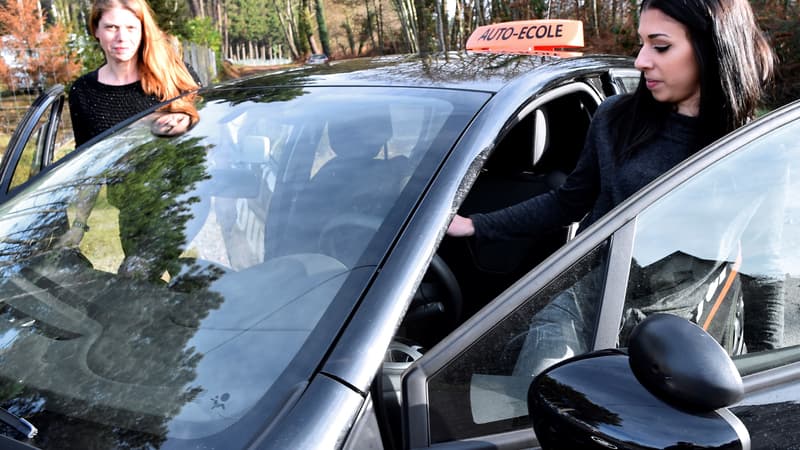Employees will soon be put to work. As part of the 10 billion euro savings plan announced on Sunday by Bruno Le Maire, the government confirmed the establishment of a global contribution for employees to the personal training account (CPF).
“You know that the personal training account represents more than 2 billion euros of effort, that we had decided from 2023 on the principle of a global participation of employees, companies, excluding job seekers,” declared on Monday the Minister of Public Accounts, Thomas Cazenave, ensuring that the introduction of a co-payment of at least 10% will generate savings of 200 million euros.
This measure follows the recommendations of the Court of Auditors which recommended from June 2023 the establishment of a small financial contribution from employees who use their CPF to guide their choices towards training more “oriented towards the development of skills and employability”.
“In order not to discourage CPF holders from using it, in particular people with low incomes, this remainder should be set at a fairly low level, for example 5% or 10% of the cost of training, and modulated into depending on the level of qualification of the training desired by the beneficiary”, estimated the Sages, observing that “a still important part of the” training “expenses does not lead to a qualification certification, although they can have a positive effect on the career beneficiary’s professional (driving license, for example)”.
Driver’s license in mind
According to data from the Caisse des Dépôts, in 2022, 1.8 million training files will be validated through the CPF. Year at the end of which the Mon Compte Formation platform still offered 200,000 offers. The latter, however, were concentrated “in a small number of training areas, since almost one in two training courses” were offered “in the field of transport, handling, purchasing or in modern languages,” he noted. the Caisse des Dépôts in September 2023. And he added that “of more than 80 training areas, the first 20 represent more than 90% of the training available on the site.”
Among the certifications actually subscribed through the CPF, the driving license occupies first place (17% of the training carried out), ahead of the training provided to business creators and buyers (14%) and the Toeic English test ( 7%). This is followed by competency assessment (5%), training in the use of spreadsheet software (2%) and Excel office automation certification (2%).
If the average price of the training offered through the CPF was 2,280 euros in 2022 for an average duration of 130 hours, the prices and duration of the training actually subscribed are much lower: 1,430 euros for 53 hours. For the driving license, the average price is 910 euros for an average training duration of 19 hours.
These differences between the prices shown and the prices actually paid are explained, on the one hand, by the fact that “holders of a personal training account mainly look for training based on their available balance, which amounts to an average of 1,460 euros at the beginning of 2022”, underlines the Caisse des Dépôts. Furthermore, job seekers who represent a third of the training courses subscribed opt for certifications that are 13% cheaper on average (1,310 euros on average) than those subscribed by employees and self-employed workers (1,490 euros).
This difference is also due to the fact that job seekers “more often prepare for certified training directly related to the exercise of a profession, while employees and self-employed workers are more likely to obtain certifications in languages or YOU”. the Caisse des Dépôts. Although “the category B driving license and the training actions given to business creators and buyers (ACRE) are in the first two positions of the most subscribed certifications for both populations.”
Geographic disparities
Another study by the Caisse des Dépôts observed in early 2023 that CPF use was higher in cities than in rural areas. “The CPF utilization rate (by employed workers) is all the more important as the degree of density is high,” he noted: 5.5% in dense spaces in 2021, 3.6% in intermediate density spaces , 2.9% in low density spaces and 2.2% in very low density spaces, we can read.
This observation is amplified when we focus solely on job seekers. “It is in the densest areas where job seekers are, in relation to their number, the most likely to mobilize their CPF rights (13.9% compared to 11% in intermediate areas and 10.6% in low-income areas).report statuses.
The study also highlights that the training courses followed were “more directly related to the practice of a specific profession in rural areas.” Thus, “the rate of use of the CPF to finance the B permit is more than ten times higher in dense areas than in rural areas.” In these areas, obtaining a driving license “occupies the first place in training financed by CPF rights (19% of the total beneficiaries), the third in medium density areas (7%) and, only, the ninth and tenth place in low-density ones”. and very low density spaces (3% of beneficiaries).
Source: BFM TV


